A heterodimer of hemoglobin identifies theranostic targets on brain-metastasizing melanoma cells
- PMID: 40285526
- PMCID: PMC12178103
- DOI: 10.1002/ijc.35458
A heterodimer of hemoglobin identifies theranostic targets on brain-metastasizing melanoma cells
Abstract
Cancer microenvironments encompass both cancer-promoting and cancer-restraining factors. If these factors cancel each other, cancer dormancy may ensue. In search of microenvironmental factors that keep dormant lung-metastasizing neuroblastoma cells and brain-metastasizing melanoma cells (BMMC) in check, we identified the beta subunit of hemoglobin and a heterodimer of alpha and beta chains of hemoglobin (α/β dimer) in the lung and brain microenvironments, respectively, as anti-metastatic factors. A previous study demonstrated that the α/β dimer triggers programmed cell death of BMMC and downregulates the expression of BRD4, GAB2, and IRS2 proteins, which perform essential functions in tumorigenesis and progression. The working hypothesis of the present study is that in addition to its tumoricidal function, the α/β dimer serves as a pathfinder for the identification of therapy targets for BMMC. We, therefore, employed small-molecule inhibitors of Bromodomain-containing protein 4 (BRD4), GRB2-associated-binding protein 2 (GAB2), and Insulin receptor substrate 2 (IRS2) as potential anti-BMMC agents. A combination of sub-lethal concentrations of BRD4 and IRS2 inhibitors synergistically arrested BMMC at the subG1 phase of the cell cycle and killed more than 70% of BMMCs. The BRD4/IRS2 inhibitor cocktail (designated hereafter as BRIRi) moderated the malignancy of BMMC lines from four different human melanomas. Preliminary results suggest that the BRIRi modulated "cold" BMMC to "hot" ones. Among the top enriched functions of differentially expressed genes identified by RNAseq of BRIRi-treated versus control BMMC, TNF and apoptotic signaling pathways were observed. We propose that co-targeting BRD4 and IRS2 offers a promising approach for treating BMMC.
Keywords: JQ1 (BRD4 inhibitor); NT157 (IRS2 inhibitor); melanoma; melanoma brain metastasis; tumor microenvironment.
© 2025 The Author(s). International Journal of Cancer published by John Wiley & Sons Ltd on behalf of UICC.
Conflict of interest statement
The authors have declared that no competing interests exist.
Figures
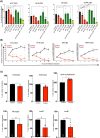
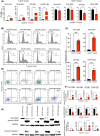
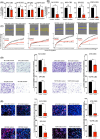
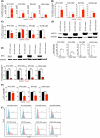
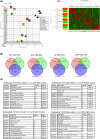
Similar articles
-
A heterodimer of α and β hemoglobin chains functions as an innate anticancer agent.Int J Cancer. 2024 Feb 1;154(3):561-572. doi: 10.1002/ijc.34702. Epub 2023 Sep 7. Int J Cancer. 2024. PMID: 37675956
-
Application and mechanisms of targeting BRD4 in osteosarcoma.Zhong Nan Da Xue Xue Bao Yi Xue Ban. 2025 Mar 28;50(3):416-429. doi: 10.11817/j.issn.1672-7347.2025.240628. Zhong Nan Da Xue Xue Bao Yi Xue Ban. 2025. PMID: 40628510 Chinese, English.
-
Achieving dual-target fluorescent probes for tracing and inhibiting BRD4/PLK1 in tumor cells and tissues synchronously.Eur J Med Chem. 2025 Oct 15;296:117886. doi: 10.1016/j.ejmech.2025.117886. Epub 2025 Jun 19. Eur J Med Chem. 2025. PMID: 40554985
-
Pharmacological and electronic cigarette interventions for smoking cessation in adults: component network meta-analyses.Cochrane Database Syst Rev. 2023 Sep 12;9(9):CD015226. doi: 10.1002/14651858.CD015226.pub2. Cochrane Database Syst Rev. 2023. PMID: 37696529 Free PMC article.
-
Assessing the comparative effects of interventions in COPD: a tutorial on network meta-analysis for clinicians.Respir Res. 2024 Dec 21;25(1):438. doi: 10.1186/s12931-024-03056-x. Respir Res. 2024. PMID: 39709425 Free PMC article. Review.
References
-
- Pardoll D. Does the immune system see tumors as foreign or self? Annu Rev Immunol. 2003;21:807‐839. - PubMed
-
- Zhan HX, Zhou B, Cheng YG, et al. Crosstalk between stromal cells and cancer cells in pancreatic cancer: new insights into stromal biology. Cancer Lett. 2017;392:83‐93. - PubMed
-
- Rubin H. Microenvironmental regulation of the initiated cell. Adv Cancer Res. 2003;90:1‐62. - PubMed
-
- Delinassios JG. Cytocidal effects of human fibroblasts on HeLa cells in vitro. Biol Cell. 1987;59:69‐77. - PubMed
MeSH terms
Substances
LinkOut - more resources
Full Text Sources
Medical
Research Materials
Miscellaneous

